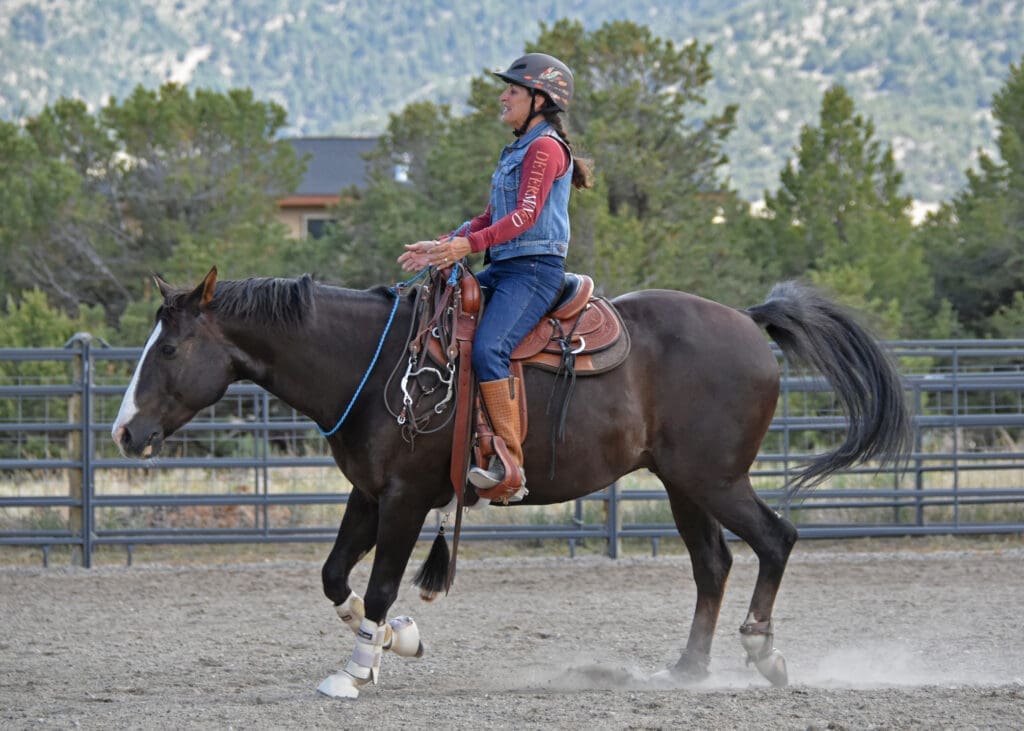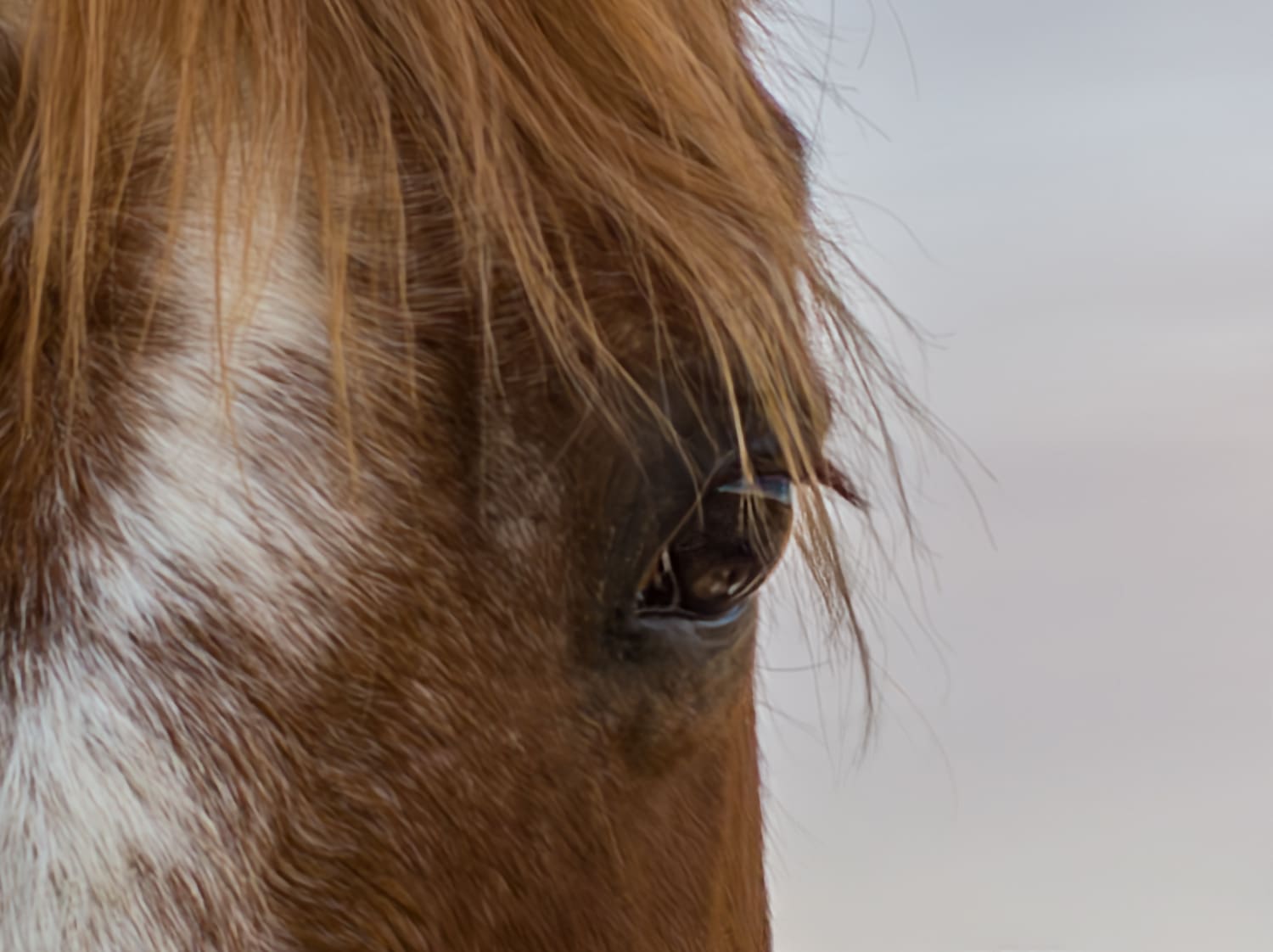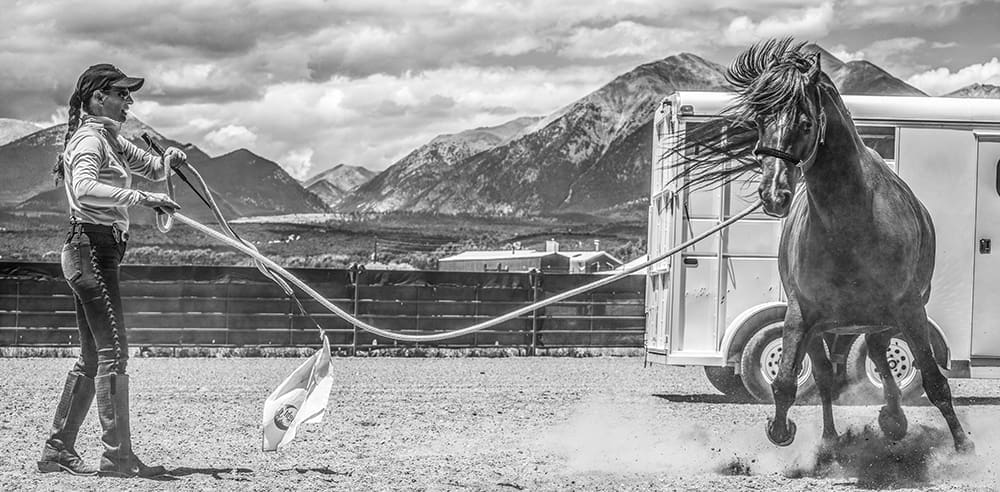
Turning your horse without reins
Riding Without Reins: It’s not as hard as you think!
To listen to the audio version, click here and look for the title “Blogpost: Riding without Reins.”
Most riders can’t imagine having full control of a horse without holding the reins, let alone without a bridle. But it’s not as challenging as you might think. There’s nothing hard about riding without the reins except stopping, turning, and backing!
It’s not typically the horse that’s the problem when it comes to a rider’s over-reliance on the reins. It stems from the way riders are initially taught. How do I make him go? Kick him. How do I stop? Pull back! How do I turn? Pull to the side. Kick to go and pull to whoa.
Unfortunately for horses, this leaves riders with an underlying and engrained assumption that the horse must be forced to go in a direction or speed by pulling or kicking; that the rider is manually steering and stopping the horse with the reins, like guiding a bull with a nose ring. Sadly, this unconscious assumption becomes deeply engrained in the rider’s muscle memory, leading to overuse of the reins.
The truth is that a trained, compliant, and experienced riding horse has shown time and again that it is willing to comply with the rider’s directives (if the cues make sense). The trained horse goes forward when asked, turns when asked, and is happy to stop and rest when asked. Most trained horses can easily be ridden in a halter or neck rope because they know the drill so well.
There will always be times when a horse’s motivation might cause it to ignore cues, like when asking an insecure horse to leave the herd or when a horse is bolting in fear. Because things can change fast with horses—from dead calm to full-tilt boogie in less than a second, it’s important to stay tuned into a horse’s emotional state, to the motivations behind its behavior, and to always have keen situational awareness when riding (aka, being present in the moment).
If the horse is compliant, all the rider needs to do is ask for a change of direction or speed. The idea is to communicate with the horse through body cues, asking the horse with light cues from seat and legs, not manually forcing it with the reins. In most instances, a trained and compliant horse simply needs to know what the rider wants.
The rider is the pilot of the ship, the horse is the first mate and carries out the directives. When a horse accepts the rider’s authority (agrees to go when and where the rider wants), all it needs is the information. At this point, the rider is not manually controlling the horse but simply communicating what is wanted—issuing the directive.
Reins and bit pressure are not necessary to guide a compliant, trained horse, unless the rider offers no other information to the horse.
Horses communicate with each other using gestures, postures, and a few audible signals. Accomplished riders use the same language to develop cues that guide the horse without rein pressure. Remember: reins are not for cueing. They are for reinforcement to a cue that came from the rider’s body.
To break the pattern of over-reliance on the reins, the rider simply needs to learn to communicate with all the natural aids: seat, legs, arms, and voice. In almost every clinic I teach, I coach riders to stop and turn without reins. It rarely takes more than ten minutes before the horses respond and all the riders have ditched the reins.

Stopping your horse with your seat.
Without exception, the most challenging part of this exercise is to get the rider to stop cueing with the reins first, because it is so engrained in their muscle memory. It’s a subconscious reflex. As soon as the rider thinks stop, the pull on the reins begins. The longer they’ve ridden, the harder it is to break the reins-first habit.
Most horses respond immediately when the rider starts using other aids, but some horses have long ago given up listening for cues—they wait for the inevitable pull. Why bother concentrating on every move of the rider when the pull on the reins comes anyway? But once riders break the reins-first pattern and become clear and consistent with their body cues, the horse perks up and listens for the other cues.
Horses are motivated to listen to the other cues when they learn that if they respond to seat and leg cues, the bit pressure will not come. The horse is willing to turn or stop when asked. To be able to comply with the rider’s directives without a pull on its mouth is a huge benefit to the horse, so it’s motivated to listen and respond.
Of course, this entails not just better riding but also trust on the part of the rider. Trust that the horse will respond the way it’s trained to without manually forcing it. This is difficult for many riders, who subconsciously think the reins are the only thing that gives them control.
It’s amazing to see how horses blossom when the rider trusts them to do the job they were trained for and stops pulling them around thoughtlessly like a bull with a nose ring!
I understand the trepidation that comes from letting go of that lifeline, and that’s why I designed a neck rope that is the perfect intermediary between over-reliance on the reins and riding without a bridle at all.
To become the rider that every horse wants, first the rider learns to cue for stops and turns without the reins, using rein pressure to reinforce cues that came from your other natural aids (seat, legs, and voice). Gradually the rider loosens the reins until the horse responds to the cues without reinforcement from the reins. Then ditch the reins and rely on the neck rope for reinforcement of the cue!
The neck rope is also handy for starting liberty groundwork with the same process. By developing body-language cues from the ground, the horse learns to stop, go, turn, and longe without a halter or lead rope. Will this kind of connection and communication carry over to riding? Absolutely!
The results of communicating with body cues are extraordinary. The horse and rider (or handler from the ground) become one unit on the same mission with seamless and invisible communication. And it’s not as hard as most people think!
Make a commitment to break the over-reliance on the reins and/or lead rope, to use the neck rope as a back-up plan, and then reap the rewards. Watch the video below for how to cue for stop and turn without reins. Your horse will love you for it!



